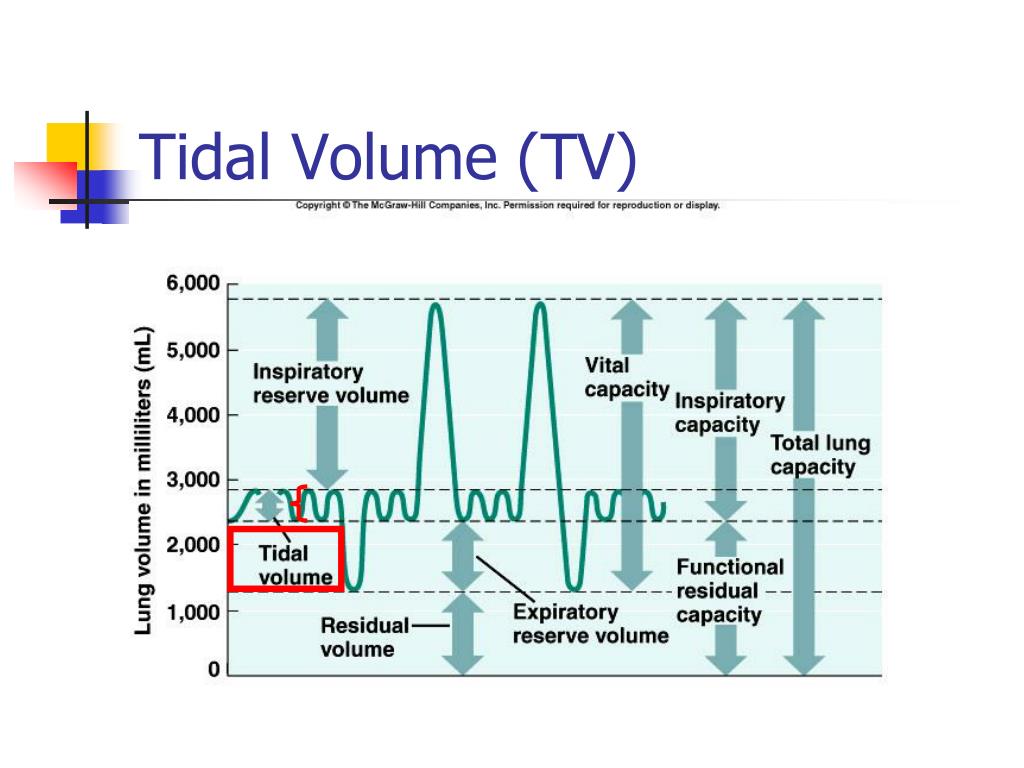
These two x-rays show two males of comparative age, sex and body fat, but different heights. The size of the lungs does not change based on the body weight of the patient. Regardless of body habitus, a bariatric patient’s lungs are not larger than another patient that is the same sex and height.
VENT TIDAL VOLUME CHART FULL
By ventilating heavier patients with larger volumes, clinicians were overinflating the alveoli in the lungs and causing barotrauma and volutrauma, leading to VILI.įun fact: If you see a full body CT scan or MRI of a bariatric patient, this concept is clear. A person’s lung size is based on skeletal structure, which means the only relevant variables are sex and height. After bariatric patients were getting VILI at a higher incidence when the larger tidal volumes were used, further investigation revealed that the size of the lungs do not alter based on body weight of the patient. It was still common practice to assume patients with a higher weight required a larger volume to satisfy their ventilation needs (O 2 in and CO 2 out) because they had more habitus, meaning more cells in the body creating CO 2 and needing oxygen to function. The smaller the patient, the smaller the tidal volumes and the larger the patient, the larger the tidal volumes. What happens? It pops! The same thing can happen to the alveoli.Ī weight-based approach to choosing tidal volumes started to be used. Think of inflating a balloon to the point that the pressure and volume are too high. The terms barotrauma and volutrauma can be used interchangeably and they mean the same thing-volume equals pressure, and pressure equals volume. Health care providers were directly harming their patients with this high volume/low RR ventilation strategy. The conclusions were very clear that using large tidal volumes directly related to increased incidence of VILI by causing barotrauma (too much pressure in the alveoli) and volutrauma (too much volume in the alveoli). When it was identified that mechanical ventilation was seeming to cause bilateral damage to the lungs, multiple studies were carried out to determine if the settings on the ventilator were contributing to this. Acute Respiratory Distress Syndrome: New Definition, Current and Future Therapeutic Options.If you would like some basic knowledge regarding ARDS, refer to these two links for a brief overview (the first link is more basic, and the second link provides more advanced information): These patients can become very sick and difficult to ventilate. It can be caused by other processes in addition to VILI. It is usually identified on a chest x-ray after other pathophysiologies are ruled out. Key content includes the differences between volume and pressure ventilation, common ventilator modes and settings, ventilator alarms including common causes and nursing interventions, and nursing priorities including information on the handoff report for ventilator settings.ARDS is a complex pathology that is recognized as diffuse bilaterally inflammation and damage to the lungs. This tool describes the common modes of positive pressure ventilation and the ventilator settings ordered for your patient with respiratory failure or acute respiratory distress syndrome (ARDS).

Mechanical ventilation settings can be confusing and difficult to understand.


 0 kommentar(er)
0 kommentar(er)
